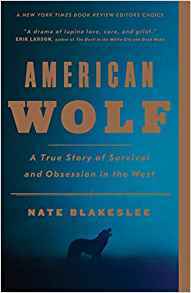Originally published in Scribner’s Magazine in 1894 under the title “Lobo, the King of Currumpaw,” the story recounted how a friend in the New Mexico Territory hired Seton to kill a wolf that had plagued ranchers in the area for years. Seton, who had some experience as a trapper, tried a variety of poisoned baits and buried traps, but Lobo, as the ranchers called the enormous gray male, was simply too wily. Finally Seton found the wolf’s weak spot. He trapped Lobo’s naïve young mate, known to ranch hands as Blanca, and dragged her carcass through a field laden with traps, knowing that Lobo’s
...more
“Originally published in Scribner’s Magazine in 1894 under the title “Lobo, the King of Currumpaw,” the story recounted how a friend in the New Mexico Territory hired Seton to kill a wolf that had plagued ranchers in the area for years. Seton, who had some experience as a trapper, tried a variety of poisoned baits and buried traps, but Lobo, as the ranchers called the enormous gray male, was simply too wily.
Finally Seton found the wolf’s weak spot. He trapped Lobo’s naïve young mate, known to ranch hands as Blanca, and dragged her carcass through a field laden with traps, knowing that Lobo’s blind loyalty would drive him to follow her scent heedlessly. When Seton returned to check his handiwork, he found Lobo held fast by traps on three of his legs. Seton had outsmarted him at last.
But when the time came, he couldn’t bring himself to shoot Lobo. Something about the nobility of the enormous beast, among the last of his kind, hopelessly ensnared and yet still lunging gamely at his captor—and perhaps the shame of having resorted to such underhanded tactics to catch him—kept Seton from finishing the job. Instead he brought Lobo back to his employer’s ranch, where he chained him up with plenty of food and water nearby. The next morning he was dead—the victim, Seton surmised, of a broken heart.”


